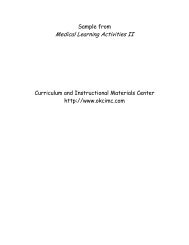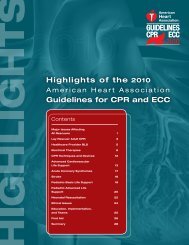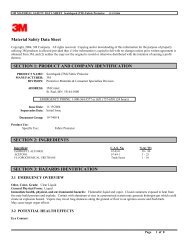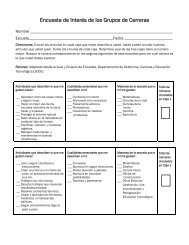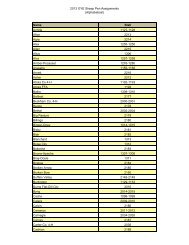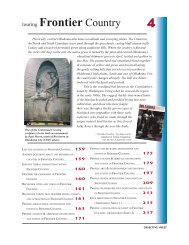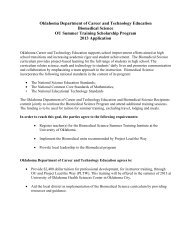Animal Nutrition and Digestion (PDF file, 5.95 MB)
Animal Nutrition and Digestion (PDF file, 5.95 MB)
Animal Nutrition and Digestion (PDF file, 5.95 MB)
You also want an ePaper? Increase the reach of your titles
YUMPU automatically turns print PDFs into web optimized ePapers that Google loves.
Agriscience Principles <strong>and</strong> Applications<br />
s<br />
Basics of <strong>Animal</strong><br />
Physiology<br />
Physiology refers to the systems <strong>and</strong> functions<br />
of the body. What are the systems in an animal’s<br />
body? The major ones include the skeletal,<br />
muscular, circulatory, respiratory, nervous, urinary,<br />
endocrine, digestive, reproductive, <strong>and</strong> mammary<br />
systems.<br />
The heart, a muscular organ, pumps blood through<br />
the system. The vessels that carry blood from the<br />
heart to the body are arteries. Capillaries are small<br />
vessels that carry blood to individual cells where<br />
oxygen <strong>and</strong> nutrients are delivered, <strong>and</strong> carbon<br />
dioxide <strong>and</strong> wastes enter the blood. Veins carry<br />
blood back to the heart.<br />
Skeletal System<br />
The skeletal system consists of bones <strong>and</strong><br />
cartilage that give the body shape. It protects<br />
internal organs <strong>and</strong> provides support for the<br />
body. Bone is the major component of the<br />
skeletal system, which consists partially of<br />
calcium <strong>and</strong> phosphate. The material inside<br />
bone is bone marrow, which produces blood<br />
cells. Cartilage provides support <strong>and</strong> serves as<br />
a cushioning effect for joints.<br />
Circulatory System<br />
Arteries<br />
Veins<br />
Circulatory System<br />
Heart<br />
Kidneys<br />
Lungs<br />
The main components of the circulatory<br />
system are the heart, arteries, capillaries,<br />
<strong>and</strong> veins. The circulatory system delivers<br />
food <strong>and</strong> oxygen to the cells of the body <strong>and</strong><br />
eliminates waste products. It contains blood,<br />
which consists of red blood cells, white blood<br />
cells, <strong>and</strong> platelets. Red blood cells carry oxygen<br />
while white blood cells help the body fight disease.<br />
Liver<br />
Humerus<br />
Radius<br />
Ulna<br />
Scapula<br />
Skeletal System<br />
Vertebrae<br />
Femur<br />
Fibula<br />
Tibia<br />
Tarsus<br />
Urinary System<br />
The urinary system, also known as<br />
the excretory system, consists of the<br />
kidneys, bladder, urethra, <strong>and</strong> ureters.<br />
The purpose of the urinary system is<br />
to remove waste products from the<br />
blood. The urinary system filters waste<br />
products <strong>and</strong> some water through the<br />
kidneys. The urine then goes through the<br />
ureters to the bladder where it is emptied<br />
through the urethra.<br />
Carpus<br />
Metacarpus<br />
Metatarsus<br />
Phalanges<br />
3



